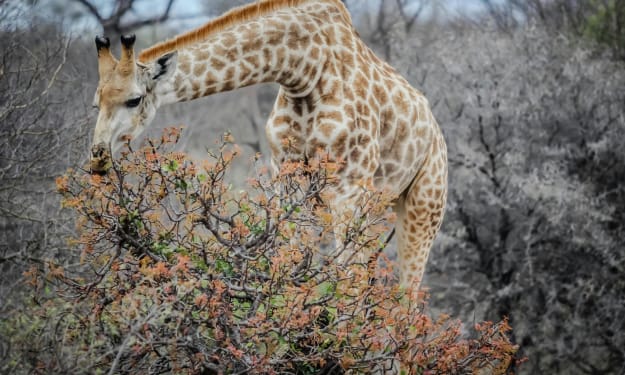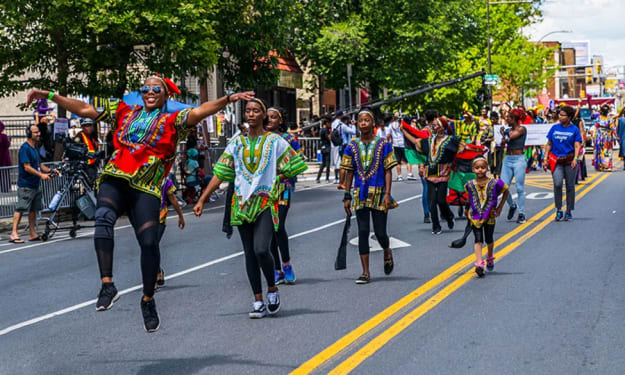Content warning
This story may contain sensitive material or discuss topics that some readers may find distressing. Reader discretion is advised. The views and opinions expressed in this story are those of the author and do not necessarily reflect the official policy or position of Vocal.

In a small town nestled between rolling hills and vast forests, people went about their daily lives with a sense of normalcy. They woke up, went to work, sent their children to school, and enjoyed the simple pleasures of life. However, the world beyond their town was grappling with an unprecedented challenge that disrupted this normalcy—climate change.
The town of Greenfield had always prided itself on its lush landscapes, fertile soil, and bountiful harvests. Farmers grew a variety of crops, from corn and wheat to apples and berries, thanks to the region’s temperate climate. But in recent years, the weather patterns had shifted dramatically. Winters were harsher, summers were blisteringly hot, and the once-predictable rainfall had become erratic.
Anna, a third-generation farmer, stood on the porch of her farmhouse, gazing out at her fields. The soil, once rich and dark, now looked parched and cracked under the unforgiving sun. She remembered her grandfather’s stories about the abundant harvests of the past, when the earth seemed to give generously and without hesitation. Those days felt like a distant memory now. The crops she had planted with hope and care struggled to survive in the extreme weather.
“I don’t know how much longer we can keep this up,” Anna said to her husband, Tom, who joined her on the porch. “Every year, it gets worse. We’ve lost so much already.”
Tom nodded, his face lined with worry. “I know. But we have to keep trying. Maybe this year will be different.”
As they spoke, their children played in the yard, blissfully unaware of the challenges their parents faced. Anna’s eldest, Emma, a bright and curious ten-year-old, overheard the conversation and asked, “Mom, why is it so hot? Will it ever rain again?”
Anna smiled sadly at her daughter. “I hope so, sweetheart. I hope so.”
The town of Greenfield wasn’t the only place feeling the effects of climate change. Across the globe, communities were facing similar struggles. Coastal cities contended with rising sea levels and frequent flooding. Forests, once teeming with life, were now ravaged by wildfires. In some regions, prolonged droughts led to water shortages, while in others, unprecedented storms wreaked havoc.
In the nearby city, a group of scientists and activists had come together to address these urgent issues. Dr. Maya Singh, an environmental scientist, led the effort. She had dedicated her life to studying climate change and advocating for sustainable practices. Her research had shown that human activities—burning fossil fuels, deforestation, and industrial pollution—were accelerating the planet’s warming.
“We need to act now,” Dr. Singh urged at a town hall meeting. “The evidence is clear. If we continue on this path, the consequences will be catastrophic. But it’s not too late. We can still make a difference.”
Her words resonated with many, but there were also skeptics. Some argued that the changes were part of a natural cycle, that human influence was negligible. Others worried about the economic impact of transitioning to renewable energy and sustainable practices.
At the heart of the debate was the need for collective action. Individuals, communities, and governments had to work together to mitigate the effects of climate change and adapt to its realities. It required a fundamental shift in how people lived, worked, and interacted with the environment.
Anna and Tom decided to attend one of Dr. Singh’s workshops on sustainable farming practices. They learned about techniques like crop rotation, cover cropping, and water-efficient irrigation. These methods not only helped conserve resources but also improved the resilience of their farm.
Back in Greenfield, the community came together to support one another. They organized tree-planting events, installed solar panels on public buildings, and created a community garden to promote local food production. Schools incorporated environmental education into their curricula, teaching children about the importance of protecting the planet.
Emma, inspired by her parents and the changes in her town, decided to start an environmental club at her school. She and her friends organized clean-up drives, recycling campaigns, and awareness programs. They even wrote letters to local officials, urging them to take stronger action on climate issues.
One evening, as Anna and Tom watched the sunset from their porch, they felt a glimmer of hope. The changes they had made were beginning to show results. Their crops were healthier, the soil was more fertile, and there was a renewed sense of community spirit.
“It’s a long road ahead,” Tom said, “but at least we’re moving in the right direction.”
Anna nodded. “We have to keep going. For our children, and for the future.”
As the seasons passed, Greenfield continued to adapt and thrive. The town became a model for sustainable living, attracting attention and visitors from far and wide. People came to learn from their experiences and to see firsthand the positive impact of collective action.
The global challenge of climate change remained daunting, but Greenfield’s story was a testament to the power of resilience, innovation, and community. It showed that even in the face of adversity, people could come together to create a better, more sustainable world.
And as long as there were individuals like Anna, Tom, Dr. Singh, and young Emma, the fight for the planet’s future would continue, fueled by hope, determination, and a shared commitment to protecting the earth for generations to come.
About the Creator
Enjoyed the story? Support the Creator.
Subscribe for free to receive all their stories in your feed. You could also pledge your support or give them a one-off tip, letting them know you appreciate their work.






Comments (1)
You did a timely work. Great job.